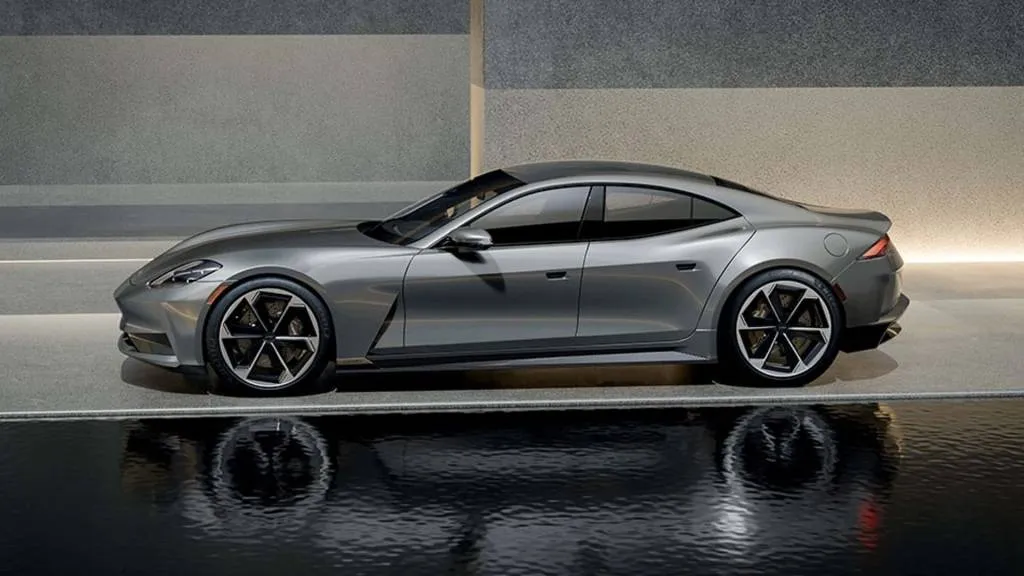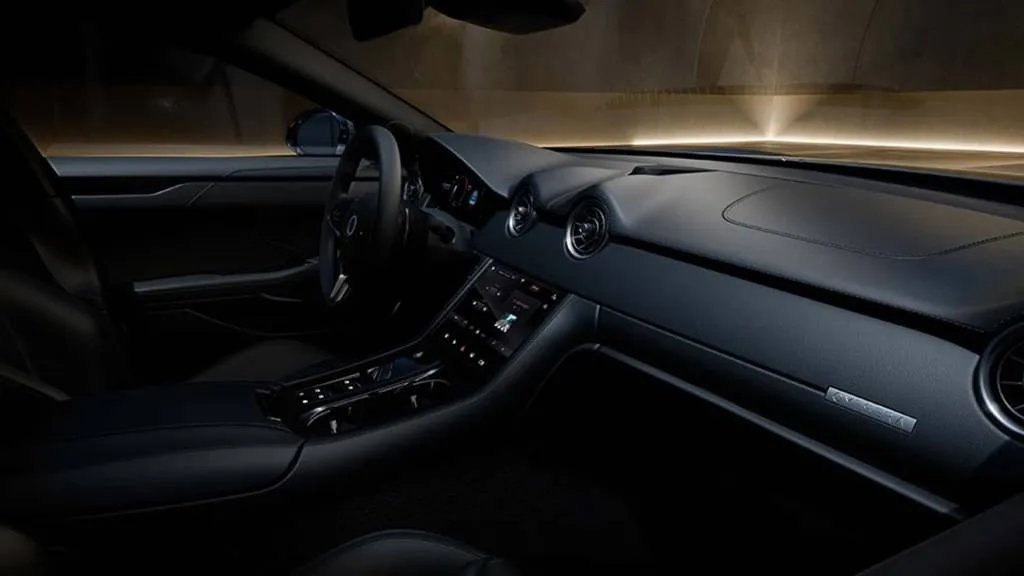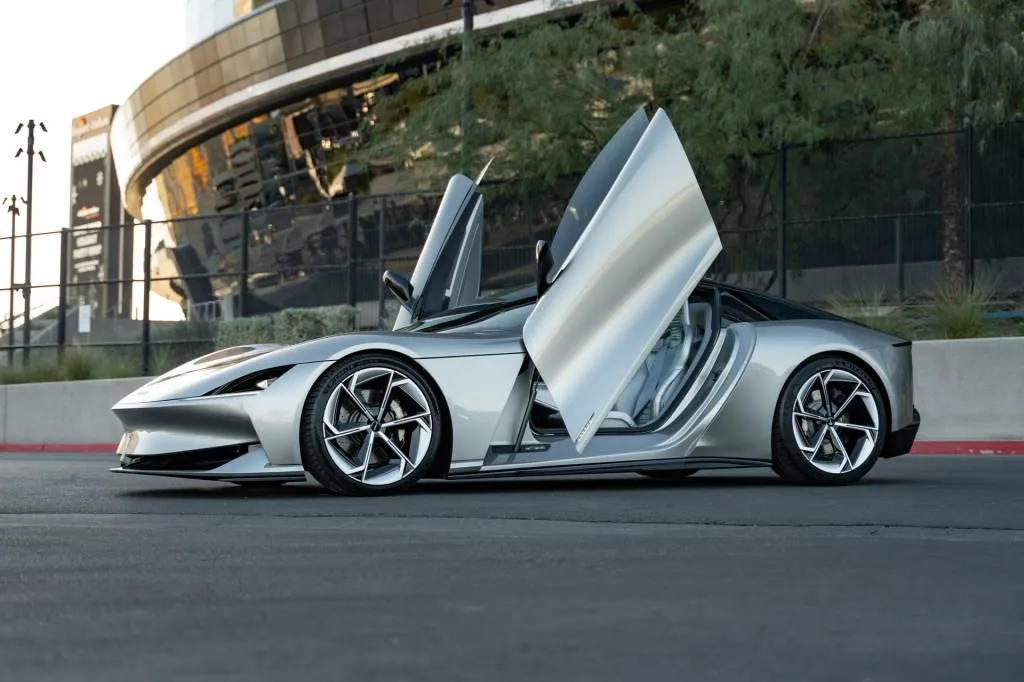- Revero PHEV manufacturing continues now, limited-edition Invictus arrives in 2025
- Gyesera in 2026 debuts new look, composite physique
- Kaveya supercar in late 2026 goes absolutely electrical, embraces Intel structure
- Karma’s push to energy fleets and industrial autos has pale
It’s been greater than ten years since California-based Karma Automotive initially fashioned with funding from the Chinese language components provider Wanxiang Group and the belongings of then-defunct Fisker Automotive.
Since then, Karma has teased a variety of idea and limited-edition autos, together with a number of about-faces in enterprise course, all whereas each refining its plug-in sequence hybrid tech and dealing towards a mixture of PHEVs and absolutely electrical fashions sooner or later. Karma highlights that it engineers, designs and manufactures its autos in Southern California.
Though Karma’s long-term funding scenario stays unclear, it additionally has severe aspirations to be a know-how provider to different automakers and the trade, as evidenced by its 2024 acquisition of the tech belongings and IP of over-the-air software program replace pioneer Airbiquity, and of its latest affirmation of a know-how partnership with Intel Automotive—together with co-branded inverters and extra—geared toward creating and refining the structure and software program for next-gen software-defined autos.
“We’ve built-in that, and we proceed to evolve our software program platform, that’s a really, very massive focus for us,” stated Karma CEO Marques McCammon, of the Airbiquity acquisition. And its upcoming Kaveya is about to behave as a “residing improvement prototype” for the Intel structure.

Intel Automotive and Karma
However final month, in a complete interview with Inexperienced Automobile Reviews, McCammon laid out that amid this, its major aim stays to be a tech-forward ultra-luxury automaker—with a ramped-up slate of fashions and an annual quantity larger than what it’s managed to make cumulatively in its 10+ years.
Karma has some heavy lifting to get there. Its solely present mannequin, the Revero, returned within the fall after a manufacturing pause earlier in 2024, and McCammon confirmed that it’s as soon as once more being delivered. Deliveries in recent times have landed under 100 autos a yr; and it earlier final yr summed that it had delivered a cumulative 1,000 autos—over its total historical past.
“I’ve no intention of claiming 50,000 or 100,000 items,” stated McCammon when requested about annual quantity targets. As a substitute, he supplied, “3,000-5,000 items is the place I need to be.”
“I could be on the ultra-luxury or unique stage and I can lean into the know-how aggressively, and I’m small so I can transfer quick,” he stated, summing up the philosophy. “After which I can share it.”
Sitting down with McCammon proper in the midst of West Corridor at CES, bustling with automotive tech and mobility suppliers, we had the CEO run by way of what is going to get him to annual manufacturing and gross sales of hundreds somewhat than a whole bunch, and of the type of desirability that may nurture that Karma as a tech provider.

Karma Revero GTS
Karma Revero, EREV series-hybrids stay the muse
The Revero (additionally known as the Karma GS-6 for a quick time) is a continuation of the Fisker Karma, which was first delivered in 2011. It carries most key features of the unique Karma’s design ahead however matches it with a revamped powertrain and up to date inside. The plug-in series-hybrid propulsion system was featured within the Fisker Karma and is derived from a Quantum Applied sciences system initially developed for navy autos. However Karma has extensively revamped that since Fisker days, with a extra highly effective and refined 1.5-liter BMW turbo-3 and greater 28-kwh battery pack launched for 2020.
In Karma’s so-called EREV system, the gasoline engine runs a generator when wanted, whereas a dual-motor propulsion system produces 536 hp with extra electrical energy from the engine—delivering a 4.5-second 0-60 mph time—or 476 hp with out the engine beginning. The Revero was EPA-rated at 61 miles for the 2020 mannequin yr and specs haven’t modified considerably since then.
With it, the Revero is among the few plug-in hybrid fashions in the marketplace that can fast-charge. On an easy-to-find 50-kw CCS connector it will probably get to 80% in 24 minutes, in keeping with Karma—so a fast cost throughout lunch would possibly permit you greater than 100 electrical miles over the course of the day.

Karma Revero Invictus

Karma Revero Invictus

Karma Revero Invictus
Invictus transforms Revero, provides efficiency focus
The Karma Invictus comes subsequent—later this yr. As a particular version of the Revero, it’s set to be constructed round “a chassis extra tightly refined for efficiency,” stated McCammon, and it’ll weigh much less total than Revero.
Karma has promised efficiency upfits together with Öhlins dampers, Swift springs, and Pilot Sport 4S tires for the Invictus.
“We change aluminum paddles with carbon; we lighten the automobile up and we make it a enjoyable driving machine; after which we do some actually trick issues on the inside, like hand-stitched themes the place we draw from the Chrysler Constructing in New York,” stated McCammon. “It’s very Artwork Deco—a collectible automobile.”
The Karma and Invictus will proceed to reap the benefits of Karma’s physique store in Moreno Valley, California, which was configured to construct a complete set of autos all beginning with the identical aluminum house body.

Karma Gyesera

Karma Gyesera

Karma Gyesera
Gyesera embraces composite physique, new look
After Invictus comes the Gyesera, which McCammon described as a “new rebodied automobile.”
“It’s a complete new inside, complete new exterior, we’re transferring away from aluminum for the physique, and we’re focusing extra on composite, so we’ve lighter weight, extra high-performance, extra unique, frankly.”
Work on the composite physique is being finished partly in home and partly with suppliers. Its store in California can paint composite panels however not make them. It’s specced and designed, then shipped in.
The Gyesera was initially due in 2024, and after we requested McCammon when it was arriving as a substitute, he hinted that it’s modified course over time. Though the Gyesera was initially alleged to be the primary departure from that vary extender, he advised it is going to probably as a substitute be a plug-in hybrid.
“We’ve been actively reevaluating that since June of final yr, simply due to the shift in market notion round EVs,” he stated. “Proper now with our EREV, I don’t know of anybody on the earth—nobody in North America—has an EV-only vary of as much as 80 miles.”
Someday past the Gyesera, Karma has additionally advised {that a} plug-in hybrid SUV could be in the way in which—possibly one just like the Karma Ivara idea proven final yr.

Karma Kaveya idea
1,000-hp Kaveya EV supercar exams Intel structure
The exotic-looking, absolutely electrical Karma Kaveya comes subsequent, in late 2026—or maybe sooner, hinted McCammon. It’ll produce 1,000 hp and be able to accelerating to 60 mph within the neighborhood of two seconds.
Though the Kaveya appears fully completely different, it is going to nonetheless construct on Karma’s bodily platform—which means its aluminum space-frame format and a few of the chassis items, nonetheless permitting numerous commonality regardless of the adoption of the Intel whole-vehicle electrical structure.
“We will change the backbone, the size, the peak, and don’t have to alter the elemental platform,” stated McCammon. “So we are able to translate from a Revero or Gyesera to Kaveya and nonetheless have 40-plus-percent widespread content material.”

Karma EREV E-Flex van idea
Industrial autos on the sidelines, design up entrance
Karma nonetheless plans to assist industrial autos on its platform, McCammon stated, but it surely gained’t be on the core of the enterprise—because it seemed to be in 2021 when it introduced that it could go after the electrified bus, RV, and box-truck market with a “Powered by Karma” banner. The main focus will as a substitute be on passenger autos, and particularly these on the higher finish of the market—“American ultra-luxury,” as McCammon put it.
Primarily based on the use case, its propulsion platform might have completely different configurations, together with some constructed round 400 volts and others round 800 volts. That might embrace 800-volt variations for an excellent coupe or a crossover—permitting sooner charging, amongst different benefits—plus a 400-volt model for industrial autos.

Karma On a regular basis BEV E-Flex platform
Along with know-how, design is the second key level that may get Karma to greater however still-exclusive volumes, the CEO defined—and between VP of design Michelle Christensen and Nick David as inside design director, they’re working as a staff to provide the autos a contemporary look.
”I requested Michelle to take every little thing she has finished within the studio and translate it into our total model expertise,” McCammon defined. “Nick continues to work on the automobile, however now she’s increasing that so each contact level of Karma has the identical aesthetic.”
Whereas Karma isn’t wound up in a typical startup hype cycle, it’s nonetheless making an attempt to show itself with finite sources. What it’d ship in tech and design all its personal continues to be taking type—but it surely’s due very quickly.


